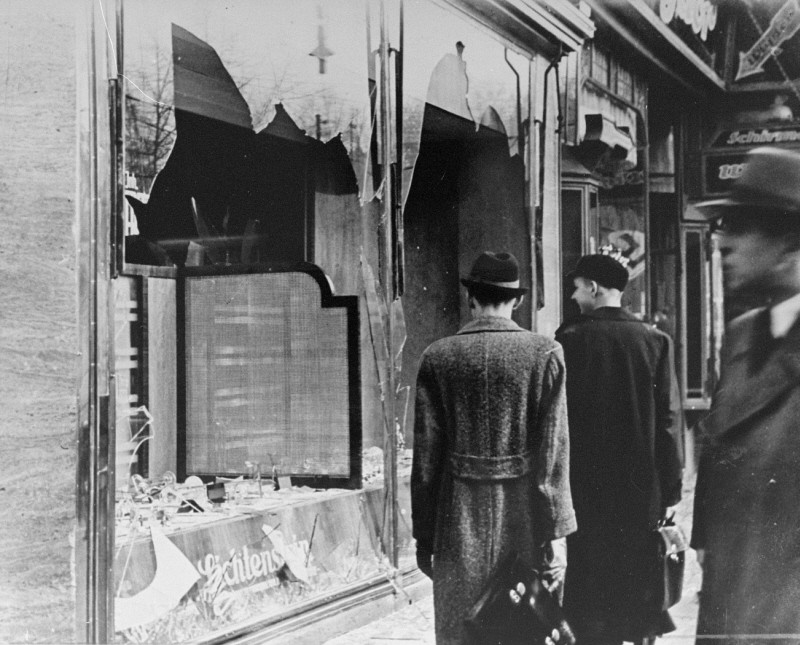
1938: Key Dates
The year 1938 was a turning point in Nazi Germany. That year, Nazi leader Adolf Hitler began to openly pursue an aggressive and expansionist foreign policy. The Nazi regime also accelerated its persecution of Jews and expanded the concentration camp system. In 1938, Nazi Germany, Italy, Hungary, and Romania enacted important anti-Jewish laws.
Key Facts
-
1
In 1938, Nazi Germany took over the neighboring country of Austria and the Sudetenland, a region of Czechoslovakia. These actions violated international treaties.
-
2
The year 1938 saw the acceleration of a refugee crisis. Hundreds of thousands of Jews became desperate to flee anti-Jewish persecution and violence in Nazi Germany and German-annexed territories.
-
3
The Nazi SS expanded the concentration camp system in 1938. They opened two new main camps and began to target new groups for imprisonment.
The year 1938 was one of the most consequential in the history of the Holocaust and Nazi Germany. It was a year of escalation in Nazi foreign policy and Nazi anti-Jewish policies.
Below is a list of some of the most important key dates from the year 1938. It includes significant dates related to:
- the development of the Nazi German dictatorship;
- Nazi Germany’s foreign policy and acts of war;
- anti-Jewish measures in Nazi Germany and German-controlled territory;
- anti-Jewish measures by Nazi Germany’s allies (or future allies);
- US and international responses to Nazi actions; and
- discriminatory measures targeting non-Jewish groups.
1938
January 21
Decree-Law no. 169 for the Revision of Romanian Citizenship
The Romanian government adopts Decree-Law no. 169. The decree aims to denaturalize Jews who had received their Romanian citizenship after World War I. As a result, about 200,000 Jews lose their citizenship. Other anti-Jewish laws and measures soon follow.
February 4
Hitler Appoints New Military and Foreign Policy Leaders
In late 1937–1938, Nazi leader Adolf Hitler decides the time has come to conquer territory and wage war. He makes personnel changes to ensure support and compliance within the German military and government. On February 4, Hitler appoints General Wilhelm Keitel as Chief of the Armed Forces High Command (Oberkommando der Wehrmacht, OKW). He also appoints Nazi ideologue Joachim von Ribbentrop as Reich Minister of Foreign Affairs. Both of these appointments come after the ouster of their less compliant or less ideological predecessors.
February 12
Hitler Undermines Austrian Sovereignty with the Berchtesgaden Agreement
Nazi German leader Adolf Hitler meets with Austrian Chancellor Kurt von Schuschnigg. The meeting occurs on February 12 at Hitler’s Obersalzberg residence near the town of Berchtesgaden, Germany. Schuschnigg expects to discuss the diplomatic tensions between Austria and Germany. But Hitler threatens him and demands a number of measures intended to increase Nazi German influence over Austria. Schuschnigg gives in to these demands and signs an agreement. The Berchtesgaden agreement undermines Austrian independence and paves the way for the Nazi takeover of Austria.
March 11
Austrian Chancellor Resigns Under German Pressure
About one month after signing the Berchtesgaden agreement, Austrian Chancellor Kurt von Schuschnigg resigns in the face of German pressure. Afterwards, Austrian Nazis quickly take over the Austrian government. This marks the beginning of the Anschluss, the Nazi annexation of Austria. A wave of violence against Jewish persons and property follows, especially in the capital city of Vienna.
March 12
German Troops Enter Austria Unopposed
German troops cross the border into Austria early in the morning on March 12. They are met with cheers and flowers. That afternoon, Nazi leader Adolf Hitler arrives in Austria. He crosses into the country at his birthplace, Braunau am Inn. Austrians welcome Hitler warmly as he travels to Linz (where he grew up). Two days later, he travels to Vienna.
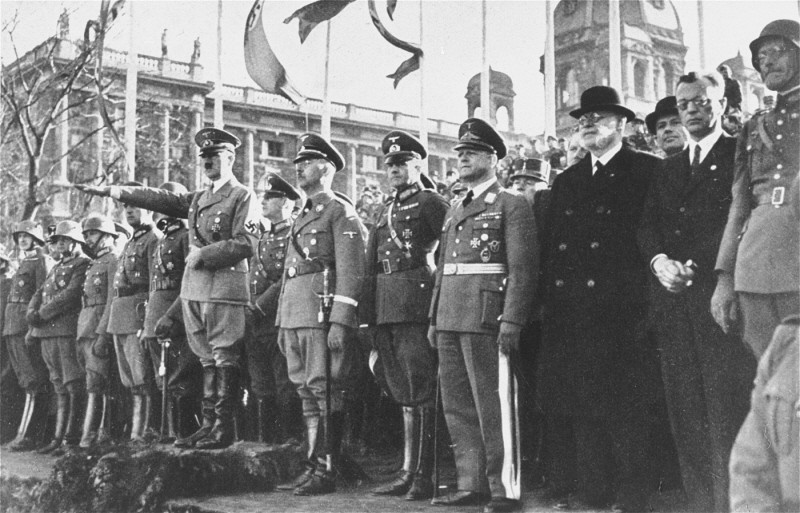
March 13
The Law on the Reunification of Austria with the German Reich is Enacted
On March 13, Austrian Nazi Chancellor Arthur Seyss-Inquart signs a law accepting Austria’s incorporation into Germany. This marks the formal end of an independent Austria. It also violates the Treaty of Versailles and other post-World War I international agreements. The law states that there will be a referendum (direct vote) confirming the union on April 10.
March 14
British Politician Winston Churchill Warns Against the Dangers of Nazi Foreign Policy
British politician Winston Churchill gives a speech before the House of Commons on March 14. He warns that the annexation of Austria is just the Nazis’ first act of territorial aggression. He insists that Britain and Europe must prepare for war. Many dismiss Churchill’s warnings about Hitler as hawkish and paranoid.
Mid-March
Austrian Jews Apply for Visas to Emigrate
The Nazi annexation of Austria is a disaster for Austrian Jews. The anti-Jewish violence that accompanies the Nazi takeover terrifies many people. There is widespread theft of Jewish-owned property and takeover of Jewish homes. Jews are beaten in the streets and arrested. Across Vienna, Jews line up outside government offices, police stations, consulates, and embassies seeking the paperwork required to emigrate.
April 21–30
Arrest of “Asocials” in Germany
As part of the Nazi regime’s “preventive crime fighting” initiative, Gestapo (Secret State Police) officials arrest 1,782 persons whom they label as “workshy” (“arbeitsscheu”). They incarcerate these individuals in concentration camps as “asocials.” Over the next year, the number of “asocial” prisoners in concentration camps increases significantly.
April 26
Decree on the Registration of Jewish Assets is Adopted in Germany and Austria
The German government issues a decree that requires Jews to register all assets (excluding personal items) if the combined value of these assets is over 5,000 Reichsmarks. The decree states that Commissioner for the Four-Year Plan Hermann Göring may ensure that these assets are used “in line with the interests of the German economy.”
May 3
Flossenbürg Concentration Camp Opens in Germany
Nazi SS authorities open the Flossenbürg concentration camp in northern Bavaria, Germany. It is originally intended to house people imprisoned as “asocials.”
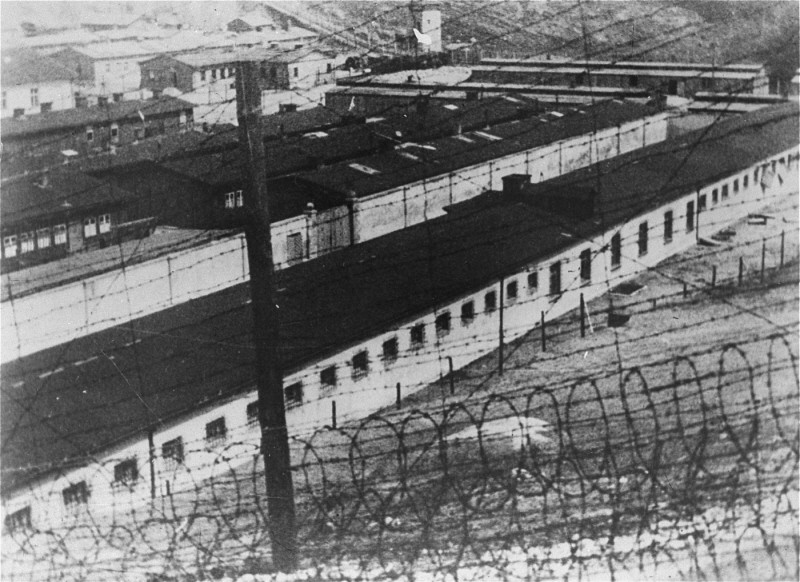
May 15
Decree on the Introduction of the Nuremberg Race Laws in Austria is Enacted
Nazi authorities decree that the Nuremberg Race Laws apply in annexed Austria.
May 29
The First Jewish Law in Hungary
Hungary adopts an anti-Jewish law that restricts the number of Jews allowed to serve in certain sectors of the economy. This is the first of several laws limiting Jews’ roles in the economy in Hungary.
June
Anti-Jewish Violence in Berlin
Throughout the month of June, Nazi leaders Joseph Goebbels (Propaganda Minister and Gauleiter of Berlin) and Wolf-Heinrich Graf von Helldorff (Police President of Berlin) stoke anti-Jewish violence and vandalism in Berlin.
June 13–18
Arrest of “Asocials” throughout Nazi Germany
On orders from the leader of the Security Police Reinhard Heydrich, German Criminal Police (Kripo) officials arrest around 12,000 men whom they label as “asocials” or “professional criminals.” They imprison these men in concentration camps. Heydrich specifies that the police should arrest “vagrants” (“Landstreicher”); “beggars” (“Bettler”); “Gypsies” (“Zigeuner”); pimps (“Zuhälter”); and persons with a criminal record “who have shown that they do not want to fit into the order of the national community.” Heydrich also instructs the police to target Jewish men with even minor criminal records. In total, hundreds of Jewish men are arrested as part of this operation. This is the first mass arrest of Jews in Nazi Germany.
July 6–15
US President Franklin D. Roosevelt Calls Evian Conference in Response to the Jewish Refugee Crisis
In response to the growing refugee crisis, delegates from 32 countries attend the Evian Conference in Évian-les-Bains, France. They discuss options for settling Jewish refugees fleeing Nazi Germany and newly annexed Austria in other countries and territories throughout the world. Most countries, including the United States, however, are unwilling to ease their immigration restrictions to address the crisis.
July 23
Third Bulletin about the Identification Card Requirement is Announced in Germany
In Germany, a new measure requires Jews to carry identification cards identifying them as Jews. Jewish people must present this ID card to officials upon request.
August 8
Mauthausen Concentration Camp Opens in Annexed Austria
Nazi SS authorities open the Mauthausen concentration camp near the Austrian city of Linz. This is the first concentration camp established outside of Germany’s 1933 borders.
August 17
Decree for the Implementation of the Law on the Alteration of Family and Personal Names is Enacted in Nazi Germany
The Nazi regime sets new name requirements for Jews in Nazi Germany (including annexed Austria). This law states that Jews can only be given specific Jewish first names. When naming a baby, Jewish parents must choose a name from a government-approved list. Also, any Jewish person who does not already have a name from this list must add another first name: “Israel” (for men) and “Sara” (for women). Individuals have to report their new names to government offices. They also have to use both their given and added first names for business transactions.
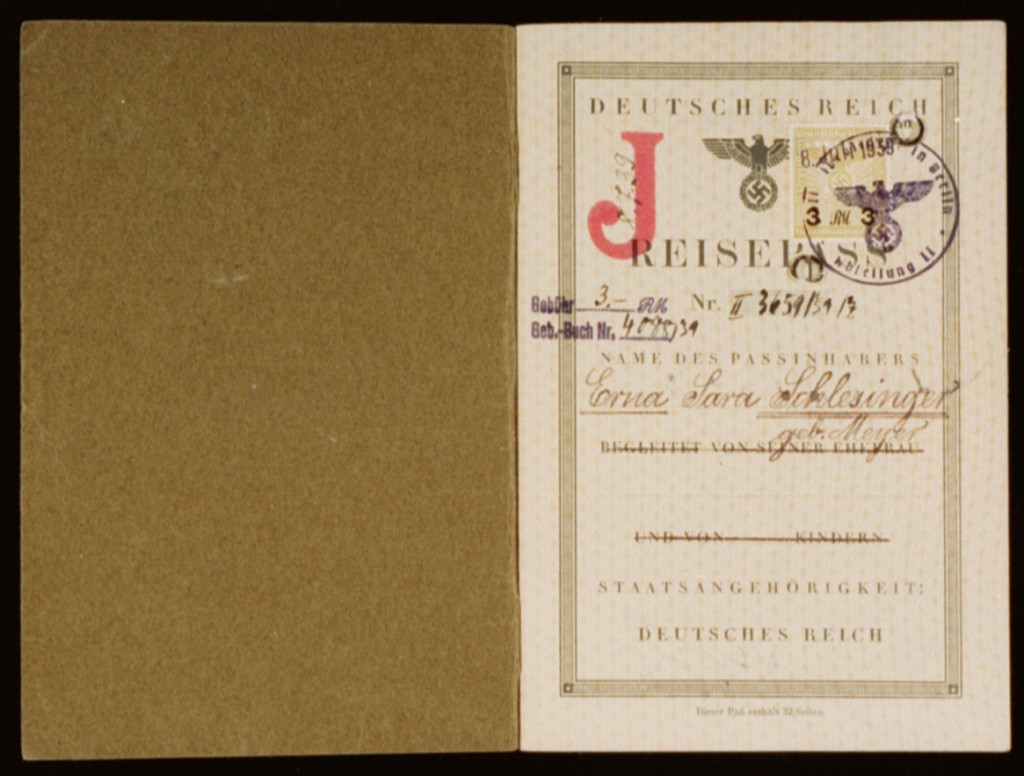
August 20
Establishment of the Central Office for Jewish Emigration in Vienna
The Central Office for Jewish Emigration is established in Vienna on August 20. This office is run by SS officer Adolf Eichmann. Its initial goal is to facilitate the rapid emigration of Jews from Vienna.
August–September
Nazis Manufacture a Crisis in Czechoslovakia
In summer 1938, the Nazis and their ethnic German supporters in Czechoslovakia manufacture an international crisis. They falsely claim that Czechoslovakia is mistreating ethnic Germans in the Sudetenland, a region of Czechoslovakia home to many ethnic Germans. In reality, the Nazis want to annex the region. They are seeking an excuse to occupy the Sudetenland. Hitler threatens war if Czechoslovakia refuses to cede the territory to Germany.
September–November
Italy Enacts a Series of “Racial Laws”
Beginning in September 1938, Fascist Italy enacts a series of “racial laws.” These laws define Jews in racial terms and exclude Jews from many aspects of Italian life. This includes banning Jewish students from schools. These laws come after two years of increasing antisemitic propaganda in the Italian press.
September 29–30
Munich Agreement Cedes the Sudetenland to Germany
On September 29–30, 1938, an international conference takes place in Munich. The conference addresses the crisis in the Sudetenland. The attendees are: British Prime Minister Neville Chamberlain; Nazi German dictator Adolf Hitler; French Prime Minister Édouard Daladier; and Italian dictator Benito Mussolini. The Czechoslovak government is not included in the negotiations. At the conference, the participants agree to allow Nazi Germany to take over the Sudetenland. In exchange, Hitler renounces any claims to the rest of Czechoslovakia. The Munich agreement is considered an act of appeasement of Nazi Germany. The British, French, and Italians disregard Czechoslovakia’s sovereignty in the name of avoiding war.
October 1
German Troops Occupy the Sudetenland
In accordance with the Munich agreement, German troops occupy the Sudetenland. They are met with enthusiasm and support from ethnic Germans in the region. The Nazi German authorities and their supporters begin to persecute Czechs, Jews, and political opponents.
October 5
Decree on Jews’ Passports is Adopted in Nazi Germany
On October 5, the Nazi regime announces a decree that invalidates Jews’ German passports. For their passports to become valid again, German Jews must submit them to a passport office so they can be stamped with the letter “J” (for the German word “Jude,” or Jew).
October 27–29
Germany Deports Jews During the Polish Action (Polenaktion)
In late October 1938, Nazi Germany rounds up and deports more than 17,000 Jews with Polish citizenship from Germany and its annexed territories. Among them are the Grynszpan family, who have been living in Hanover, Germany, since 1911. Thousands of Jews remain stranded in refugee camps. This is the first major deportation of Jews from Nazi Germany.
November 2
First Vienna Award Grants Czechoslovak Territory to Hungary
Following the Munich agreement, Hungary acquires southern Slovakia and a small part of southern Subcarpathian Rus from Czechoslovakia in an international agreement. This agreement is known as the First Vienna Award. These territories are home to a significant minority of ethnic Hungarians as well as 68,000 Jewish people. Jews from these territories become subject to Hungary’s anti-Jewish laws and polices.
November 7
Grynszpan Shoots Rath in Paris
Seventeen-year-old Herschel Grynszpan, whose parents and siblings were deported from Germany to Poland in October, shoots and fatally wounds German Embassy diplomat Ernst vom Rath in Paris. The Nazis use the shooting to incite outrage against Jews. They falsely claim that Grynszpan shot Rath as part of a wider Jewish conspiracy against Germany.
November 9
Goebbels Speech Incites Kristallnacht
On the evening of November 9, Nazi leaders learn that Rath has died after being shot by Grynszpan. Later that night, German propaganda minister Joseph Goebbels delivers a passionate antisemitic speech to top Nazi Party leaders. These leaders are gathered in Munich to commemorate the anniversary of the Beer Hall Putsch. With Hitler’s permission, Goebbels calls for an attack on Nazi Germany’s Jewish communities (including those in annexed territories). After the speech, Nazi officials rush to call their home districts and communicate Goebbels’ instructions.
November 9–10
Kristallnacht: Anti-Jewish Riots Spread Throughout Nazi Germany
In a nationwide anti-Jewish riot, groups of Nazis attack Jews and Jewish property in Nazi Germany and its annexed territories. With the help of many ordinary Germans, they burn synagogues and vandalize Jewish homes and businesses. Hundreds of Jews die during and after the riot. The police arrest approximately 30,000 Jewish men and imprison them in the Dachau, Sachsenhausen, and Buchenwald concentration camps.
November 11
Decree on Jews’ Possession of Weapons is Enacted in Nazi Germany
The German government decrees that Jews are not allowed to possess or carry firearms or edged or bladed weapons (such as swords, knives, and daggers). They must turn any weapons in their possession over to the local police, without compensation.
November 12
Decree on an Atonement Payment for Jews of German Nationality is Announced in Nazi Germany
In the aftermath of Kristallnacht, the Nazi regime demands that German Jews pay a fine of 1 billion Reichsmarks as punishment for “Jewry’s [Judentum] hostile attitude toward the German people and Reich.”
November 12
Decree on the Restoration of the Streetscape with Jewish Businesses is Adopted in Nazi Germany
The German government announces that Jews are responsible for paying for and repairing the damage caused by the rioters on November 8–10. Jewish owners whose property was destroyed are not allowed to collect insurance payments for the damage. Instead, the payments will be confiscated by the German government.
November 12
Decree on the Elimination of the Jews from Economic Life is Adopted in Nazi Germany
The German government issues a decree barring Jews from operating retail stores and mail-order businesses, as well as from engaging in a trade. The law also forbids Jews from selling goods or services at markets, trade fairs, and exhibitions.
November 15
Decree of the Reich Minister of Science, Education, and Adult Education re: the Schooling of Jews is adopted in Nazi Germany
Citing the shooting of Rath on November 7, German authorities ban Jewish children from attending German public schools. Jewish children can attend only segregated Jewish schools that are financed and managed by the Jewish communities. This decree completes the segregation and isolation of Jewish students, which the Nazi regime began in 1933.
November 15
US President Roosevelt Denounces Kristallnacht
At a press conference, US President Franklin D. Roosevelt denounces the anti-Jewish riot now known as Kristallnacht. In an official statement, he writes, “I myself could scarcely believe that such things could occur in a twentieth-century civilization.” To show the US government’s condemnation of the violence, President Roosevelt ordered Hugh Wilson, the US Ambassador to Germany, to return to Washington, DC, for consultation.
November 17
Roosevelt Extends Visitor Visas
In the aftermath of Kristallnacht, US President Roosevelt authorizes between 12,000 and 15,000 people, who are in the United States on visitor visas (often called “tourist visas”), to stay indefinitely if they do not feel safe returning to Europe. Most of these people are Jews from Nazi Germany and its annexed territories. Roosevelt also confirms that the United States will not change its restrictive immigration quota system.
November 19
Decree on Public Welfare Services for Jews is Enacted
A new decree restricts what public welfare Jews are eligible to receive from the German government. This cuts off another economic lifeline for German Jews who are facing increasingly dire economic circumstances.
November 23
The First Edition of the Jüdisches Nachrichtenblatt is Published in Nazi Germany
The first edition of a new Jewish newspaper, the Jüdisches Nachrichtenblatt, is published. This is now the only Jewish newspaper allowed to be published in Nazi Germany. It is subject to strict censorship by Nazi authorities.
November 28
Police Decree on the Appearance of Jews in Public is Announced
A German government decree permits state and local officials to impose restrictions on when and where Jews are allowed to appear in public. This sets the legal groundwork for curfews and other measures restricting Jews’ movements. On December 3, Berlin Police President Helldorff uses this measure to restrict Jews from entering certain parts of the city.
December 2
First Kindertransport arrives in England
In the aftermath of Kristallnacht, British Jewish organizations, refugee aid agencies, and child advocates team up to help Jewish children escape from under Nazi control. Their efforts are known as Kindertransports. The first Kindertransport arrives in Harwich, England, on December 2. In total, approximately 10,000 children, most of whom are Jewish, leave Nazi-controlled areas for Great Britain between December 1938 and August 1939. In Great Britain, they live in communal homes with relatives or foster families. Some never reunite with their parents.

December 3
Decree on the Utilization of Jewish Property is Enacted
The German government issues a decree that regulates the takeover of Jewish-owned businesses and property. It states that German authorities can force Jews to sell their businesses and agricultural properties to non-Jews. Jews must also deposit their stocks, bonds, and securities in certain depositories or banks. The decree also bars them from acquiring, selling, or pawning items made of gold, silver, and platinum, as well as items containing pearls and precious stones. Jews are banned from acquiring, selling, or pawning jewelry and art.
December 8
Decree on “Combating the Gypsy Plague”
SS leader and Chief of the German Police Heinrich Himmler issues a decree targeting Romani people (derogatorily called “Gypsies”). The decree proclaims that the regime will address the “Gypsy question” on the basis of race (“aus dem Wesen der Rasse”). This marks an important shift in Nazi policies toward Roma and Sinti. Himmler tasks the German Criminal Police (Kripo) with registering “all persons who, based on their appearance, customs, and traditions, are considered Gypsies or Gypsy-Mischlinge (mixed-race persons), as well as persons wandering in the Gypsy manner.” These individuals are required to undergo “racial-biological examination.”
December 27
Decree on the Introduction of the Nuremberg Race Laws in the Sudeten German Territories is Enacted
On December 27, 1938, Nazi authorities decree that the Nuremberg Race Laws apply in the annexed Sudetenland.
Critical Thinking Questions
Learn about warning signs for mass atrocity and genocide. What events during 1938 might be examples?
How did the events of Kristallnacht compare to previous anti-Jewish actions and violence in Germany under the Nazis?·
How can “national emergencies” lead to human rights violations and even atrocities?
